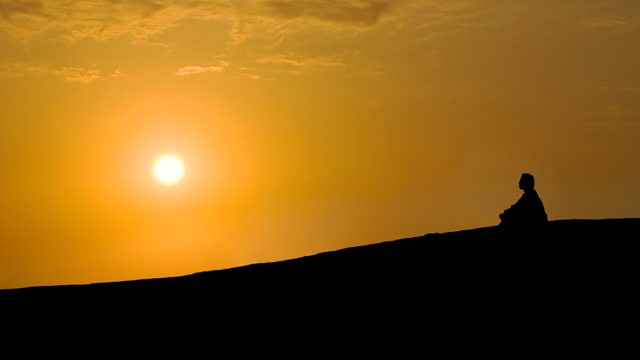
“The Kabbalah Centre is not traditional, and I know that sometimes even we forget that. Because we are not traditionalists, we do what we understand. If we do not understand it, we do not do it. We do not subscribe to doing rituals just because that is the way it has been for millenniums. We want to know why we do things. This is our consciousness.”
– Rav Berg
People have always found ways to strengthen their connection to the Creator. Across the centuries, different cultures have used song, dance, visual art, and meditation (to name a few) as an expression of their gratitude and love for the Creator. During Moses’ time, connection was manifested through sacrifices. This may seem like a strange practice from our modern point of view. It is difficult to relate to sacrifice as an important part of a spiritual practice. Yet it was a necessary part of daily life, keeping the Israelites connected to the Light.
There were many different times when people brought sacrifices to the Tabernacle or the Temple—joyous times, times of loss and devastation, trying times, or times when they had made mistakes. These are all moments when our souls desire spiritual closeness with the Creator. Performing a sacrifice was a way to foster this kind of connection. In addition, daily sacrifices were made because a connection to the Creator and our spiritual transformation is something we must continuously work towards.
The biblical chapter, Vayikra, gives precise instructions for performing a sacrifice. The Israelites honored these instructions from God and made sacrifice a consistent part of their spiritual practice for centuries. All that changed when the second Temple fell. Without the Temple as a place to carry out the act of sacrifice, people searched for other ways to draw close to the Creator.
Today, male kabbalists pray three times a day, the same times when a daily sacrifice was normally performed—morning, afternoon, and night. The morning prayer awakens energy to arouse the spiritual force known as mercy, which helps protect us from chaos and judgment. The second prayer of the day, made in the late afternoon helps to subdue our judgment of others. And the last prayer closes the day in the late evening after the sun has set. The Zohar teaches us that the evening connection has the power to literally burn away blockages that prevent us from connecting to others, making our relationships less challenging. Women do not need to make the daily prayer connection since they are able to manifest Light differently.
Praying three times a day may seem like quite a commitment, perhaps more so than most people feel able to give. However, we can use this model as an inspiration to connect regularly with the Light of the Creator. Sometimes it’s as simple as reflecting on how we could do things differently, or how we can be more giving with others. Taking time to reflect three times a day can be a form of prayer.
With each prayer we continue to make sacrifices, though they are internal. When we pray, we are approaching the proverbial altar, presenting our flaws and weaknesses to the Creator and offering up the “fat” of our consciousness, i.e. our egos, for sacrifice. It gives us the chance to review the day and our interactions with others. Through reflection we can recognize egocentric tendencies and in the process, strengthen our connection to the Creator. Admitting our self-centered behavior is difficult, yet by doing so we bring more Light into our lives and into the lives of those around us. With each prayer we move forward in life as a stronger channel of Light.
While the second Temple was destroyed physically, Rav Berg taught that when we all transform spiritually, the veils will be lifted and we will see that the Temple is still there. In the meantime, the physical loss of the second Temple reinforces that spiritual fulfillment is the responsibility of every individual. Through regular prayer or reflection, we can keep the tradition of sacrifice in order to remove negativity from our lives. The Light we receive in return is everlasting.
